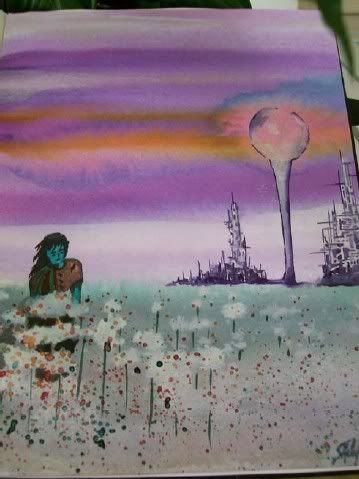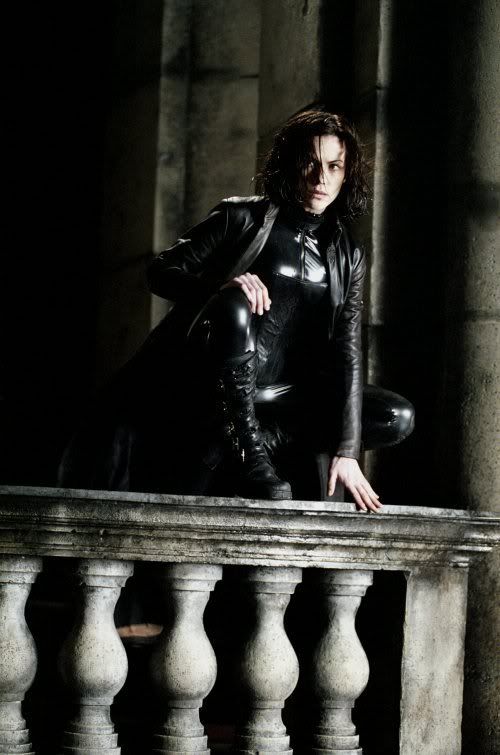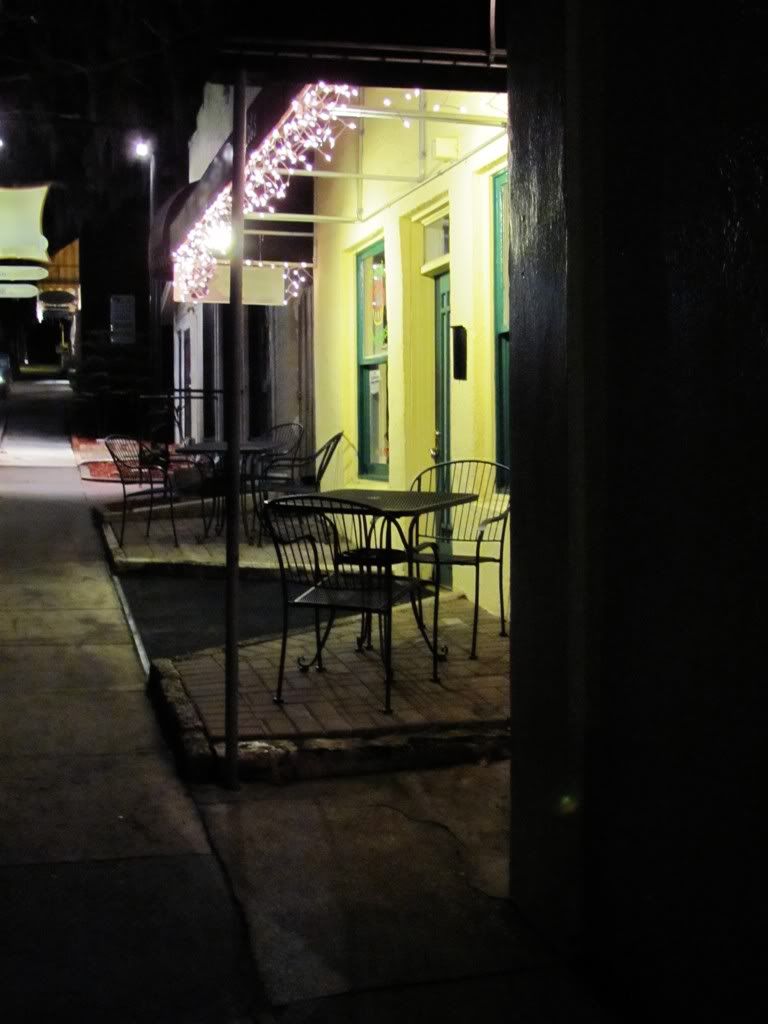 Visualization of a concept is an important part of writing for me. If I can see a scene in my head, I can write it, and my imagination is already pretty well-stocked with faces, places and things. Painting, sketching and photo-shopping also help when I have an idea I want to turn into a visual reference, particularly with settings and characters (as was the case with creating this watercolor from a StarDoc novel scene for a long letter I sent a friend.) Creating art is a great way to get to know the story element you're depicting and serves as a jog for little details that might otherwise slip your mind while you're at the keyboard.
Visualization of a concept is an important part of writing for me. If I can see a scene in my head, I can write it, and my imagination is already pretty well-stocked with faces, places and things. Painting, sketching and photo-shopping also help when I have an idea I want to turn into a visual reference, particularly with settings and characters (as was the case with creating this watercolor from a StarDoc novel scene for a long letter I sent a friend.) Creating art is a great way to get to know the story element you're depicting and serves as a jog for little details that might otherwise slip your mind while you're at the keyboard.Mood and style are integral to vivid visualization. For mood, I always go to music because it fires my imagination and sets a tone in my head. Instrumental tunes work best for me because I'm not distracted by a singer's voice or derailed by the lyrics. They also offer a wider range of interpretation; often I can use one piece for several different scenes or books. Poetry is also another mood-setter for me, and I have a collection of poems and poets I'll read specifically to tap into different parts of my emotions.
 Style is all about the forest, not the trees, of imagery. One thing I really enjoyed about all the Underworld movies was the intricacy and consistency of the dark, bleak dystopian world of the vampires and the Lycan. Here's a still of Selene, the protagonist from the first two Underworld movies, and even something as simple as the marble balcony has that blackened, neglected look to it. Battlestar Galactica (the new series) was another show that offered incredible styling which suited the storyline and bucked the traditional bright-and-shiny Utopian soft-serve SF television shows generally deliver. Battlestar was gritty, realistic and very, very human, especially with the cast choices.
Style is all about the forest, not the trees, of imagery. One thing I really enjoyed about all the Underworld movies was the intricacy and consistency of the dark, bleak dystopian world of the vampires and the Lycan. Here's a still of Selene, the protagonist from the first two Underworld movies, and even something as simple as the marble balcony has that blackened, neglected look to it. Battlestar Galactica (the new series) was another show that offered incredible styling which suited the storyline and bucked the traditional bright-and-shiny Utopian soft-serve SF television shows generally deliver. Battlestar was gritty, realistic and very, very human, especially with the cast choices. Mood and style are not about perfection, btw, unless you're writing a story about the perfect world of pretty people who all live in palaces. My skin is crawling just typing that line. Sure, I've written my fair share of Pretty People -- most under pressure from editors who didn't like the originals -- but the older I get, the less I want them in my books. They're like Barbie dolls, all smiling and staring at you with those creepy blank eyes. No, give me characters with scars and tattoos and bad haircuts and handicaps. Five foot tall heroes. Heroines who will never ever shop at te 5-7-9 store. And make a few of those Dudley Dastardly mustache-twirling butt-ugly antagonists pretty and perfect instead. Would mix things up a bit if the to-die-for guy is actually the homicidal one, yes?
Some other ways to boost your story visualizations:
 Create a visualization journal for your project. Divide it into sections for different story elements: characters, settings, time period, theme and detailing are all good, but tailor it to what you want to explore visually. Then start filling it up with images that illustrate in any manner that particular element -- body models, architecture, paintings, sketches, found objects, fabrics or anything that relates directly to and/or enhances your vision. If there are keywords or notes you want to add, write them as captions to the images. Before you begin writing a scene, go through your journal and refresh your imagination as to the specific look you want.
Create a visualization journal for your project. Divide it into sections for different story elements: characters, settings, time period, theme and detailing are all good, but tailor it to what you want to explore visually. Then start filling it up with images that illustrate in any manner that particular element -- body models, architecture, paintings, sketches, found objects, fabrics or anything that relates directly to and/or enhances your vision. If there are keywords or notes you want to add, write them as captions to the images. Before you begin writing a scene, go through your journal and refresh your imagination as to the specific look you want.Build a slideshow of images to follow your storyline. Open it with an image that captures the beginning of your story, and then progress from there (to do one for free online with different formats and theme music, check out Slide.com. The music doesn't seem to play anymore, but you can see the slideshow I made of Darkyn cover art over on the stories blog here.)
 Take one location from your story and try to find one that is similar to it in your area. Pay a visit with a camera and notebook, and take some snapshots of details that you can use in your story. Write down notes on things you see that you didn't think of, and pay special attention to things like light, sounds, smells, textures as well as how being in that place makes you feel. This is a shot I took one night recently while getting some visuals on what a small country town feels like after the shops close and everyone has gone home for the night. Feels a little spooky, especially when dozens of bats began pouring out of one restaurant's chimney -- one place I don't think I will be in a hurry to make reservations at anytime soon.
Take one location from your story and try to find one that is similar to it in your area. Pay a visit with a camera and notebook, and take some snapshots of details that you can use in your story. Write down notes on things you see that you didn't think of, and pay special attention to things like light, sounds, smells, textures as well as how being in that place makes you feel. This is a shot I took one night recently while getting some visuals on what a small country town feels like after the shops close and everyone has gone home for the night. Feels a little spooky, especially when dozens of bats began pouring out of one restaurant's chimney -- one place I don't think I will be in a hurry to make reservations at anytime soon. For those of you who like book videos and have the technical means and know-how, consider making a visualization video that relates to your story. Readers are always making dream cast videos, why not do one of your own for your story? Hunt down photos of models or actors who are good matches for your characters and intersperse them with pics of your setting or places that fit into your world-building. Try finding one image for each chapter.
Do you writers out there do anything interesting or fun to help with your story visualizations? Let us know in comments.
*Link found over at The Presurfer

This is such a cool post Lynn! I checked out Max My Dream and it's really neat. :)
ReplyDeleteStory visualization is very important to me too. That's why I try to sketch when I'm having trouble with my stories.
~TRA
http://xtheredangelx.blogspot.com
Thanks for another excellent post on the creative process. A veritable font of inspiration. Like you, if I can see a scene in my head I can write it. The difficulty is in generating and imagining and visualising the scene in the first place.
ReplyDeleteI'm feeling the need, more and more, to create thorough notes for each character. I've done this on computer before, but I don't think it works well for me. I'm off this morning to get a notebook--maybe several of them--and I'm going to clip magazines and other items that describe who each person is, what he looks like, eats, does for fun, etc. I need to really figure out who these people are and why they are fascinating to me, for they aren't getting across to my readers.
ReplyDeleteYour paragraph on perfect people really resonates with me. I find myself so turned off by a book in which everyone is gorgeous, toned, with perfect eyes and hair. *cringe*
I've always, always gotten comments about setting - there's never enough. For exotic settings, I use a site called www.trekearth.com - I think you'd love it. Photos from all over the world.
ReplyDeleteIt's really helped to flesh out the world for my WiP.
I don't do a specific journal for a writing project but I've found what ever I'm writing shows up in my art journal in some very unexpected ways.
ReplyDeleteI like the idea of taking detail photographs of a real location that's similar to one in my story.
Great article! I linked to it from our Blog today...thanks! http://www.g10writers.com
ReplyDeleteVisual cues is not something I've used often, mainly because it can be extremely difficult to find a picture that fits. For fantasy, I find that DeviantArt is a good source for visuals of mythical creatures, setting and buildings. I'd do it myself, but I have absolutely no talent for it. :p I've also found that some software designed for tabletop role playing games can be quite useful. I recently purchased FantasyMapper, a software suite designed for TRPG's. It allows you to make fractal maps of whole worlds that you can zoom into right down to the local level. You can design cities, star maps for sci-fi games, even deck plans for space ships. The world mapper can even create rainfall and temperature patterns, altitudes and climate zones based on a very easy (even for a technophobe like me) data entry interface. It's a lot of fun to play around with. I started out creating a random map just to test the program, and immediately found myself imagining what manner of creatures the world would produce, given the parameters I gave it. From there, you can create all kinds of stories.
ReplyDeleteI also use music as inspiration. I've drawn whole story concepts out of instrumental music (Keiko Matsui's music seems to be especially inspiring).
I'll have to see if I can find more images to work with, but most of the time I make do with descriptions when I can't find something close enough.
Thanks for a very good entry!
This is kind of a sidebar to the true point of your blog (which is very cool -- I love the picture of the woman in boots). But anyway, once I took a temp job as receptionist in the cardiac cath lab of a major hospital. I was 19 years old. I didn't learn until I got there that the reception phone overlooked the surgical area. Just me, at a desk, looking in at someone having a cardiac cath procedure done.
ReplyDeleteSo I'd been there five minutes, and the woman on the table woke up and started screaming.
I almost started screaming.
Of course they quickly sedated her, but it was the more terrifying thing I've ever seen. It turns out she hadn't disclosed that she was a heavy alcoholic, and they hadn't given her enough anaesthetic (Or something. This was 14 years ago.).
I will never, ever forget that moment.
And if I ever need a cardiac cath procedure done, I won't be going to that hospital.
(That temp job didn't last the day.)
I'd really like to read a story from you populated with all those Barbie dolls, all smiling and staring at you with those creepy blank eyes. I'd read it in a heartbeat!
ReplyDeleteI need to start doing more with the journaling thing, filling one with the sights, sounds and people in my stories. I think it would help during those times when my imagination comes to a complete standstill. And I think in this case, it would work better by hand rather than on the computer. But I'm always willing to give something a shot! Thanks.